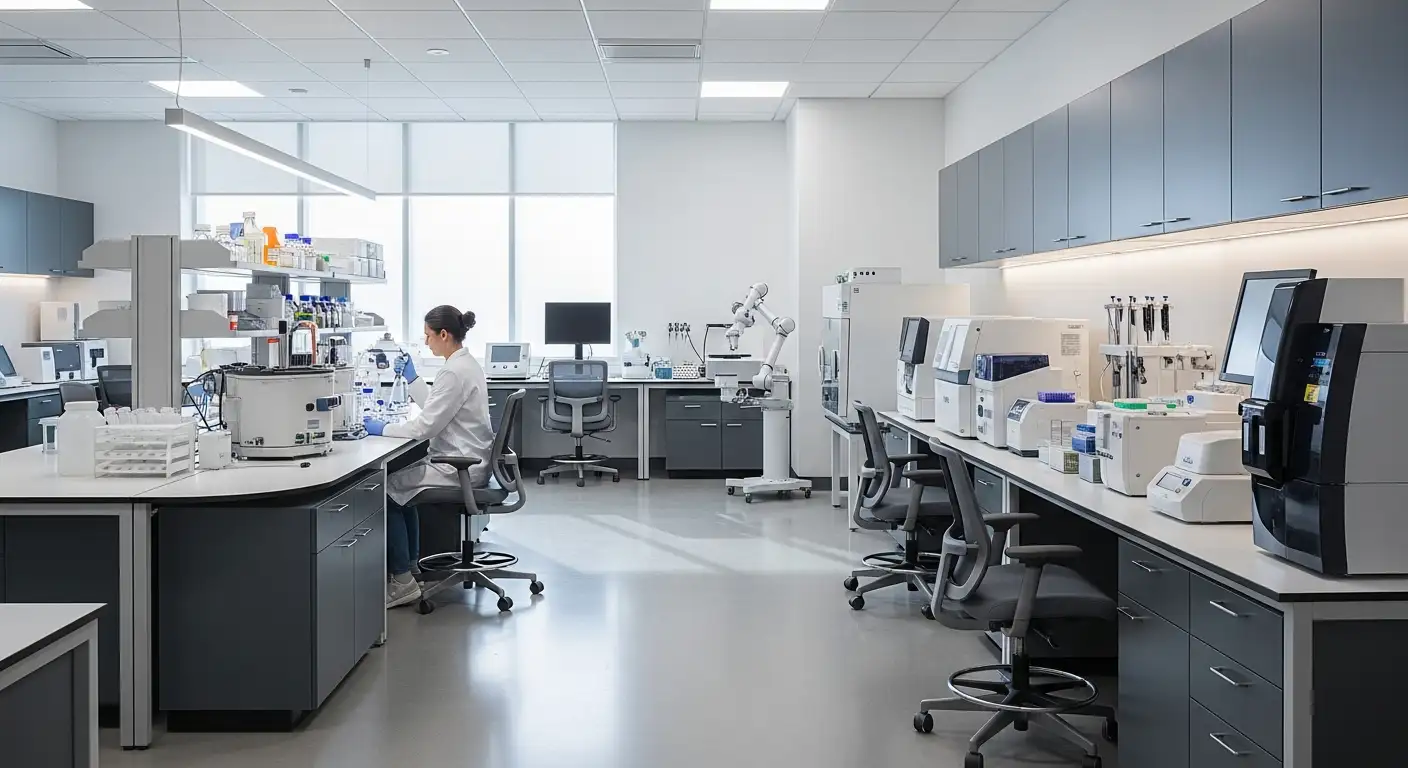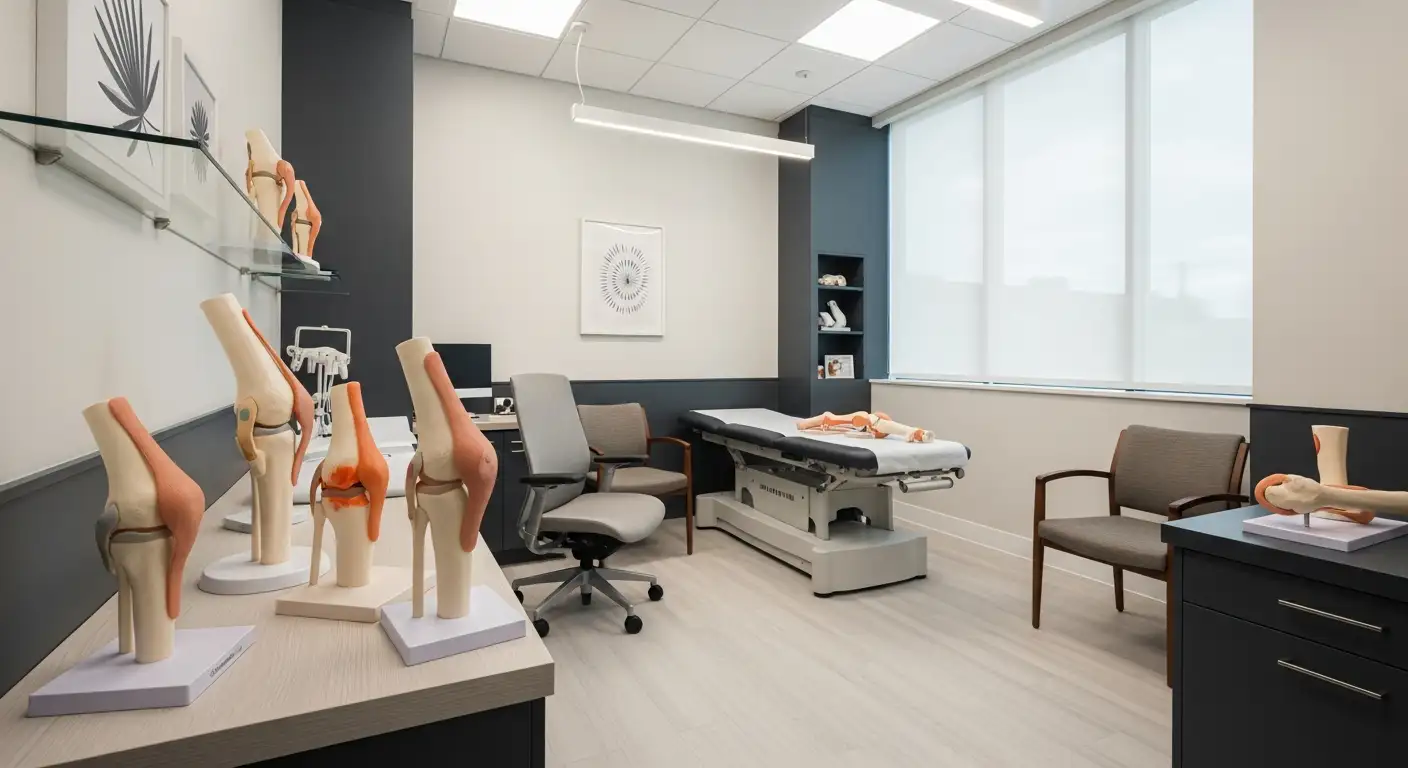Understanding the Breakthroughs in Genicular Artery Embolization
Recent developments in minimally invasive treatment options for knee osteoarthritis have spotlighted genicular artery embolization (GAE) as a promising alternative to traditional surgical interventions. This article explores the latest scientific research, procedural techniques, clinical outcomes, safety profiles, and future prospects of GAE, aiming to inform both clinicians and patients about its evolving role in managing knee osteoarthritis.
Pathophysiological Basis for GAE in Knee Osteoarthritis

Inflammation and neoangiogenesis in osteoarthritis
Recent evidence emphasizes that the development of knee osteoarthritis (OA) involves persistent, low-grade inflammation and the formation of new blood vessels, a process called neoangiogenesis. These pathological changes fuel ongoing joint degradation, amplify pain, and sustain inflammatory cycles.
Blood vessel growth contributing to pain and inflammation
In OA, abnormal neovascularization occurs as new, fragile blood vessels invade the synovium and joint tissues. These vessels are often accompanied by nerve fibers that are not usually present in healthy tissue, creating a direct link to increased pain sensations. This hypervascularization sustains inflammation by supplying nutrients and inflammatory mediators to diseased tissues.
Targeting hypervascularization in treatment
Genicular artery embolization (GAE) is a minimally invasive procedure designed to target these abnormal blood vessels. It involves the selective blockage of hypervascularized regions identified through advanced angiography. By reducing blood flow to inflamed and neoformed vessels, GAE aims to diminish inflammation and nerve activity, resulting in pain relief and improved joint function.
How long does it take for GAE to work?
Most patients notice noticeable pain reductions within days to a few weeks after GAE. Typically, significant relief begins within 1-2 weeks, with continued improvements over several months. The duration of benefits varies but can last from several months to years, influenced by individual factors such as osteoarthritis severity and activity levels.
Does GAE really work?
Evidence supports GAE as a promising option for managing knee OA pain, especially in those unresponsive to conservative treatments. Clinical trials reveal substantial improvements in pain and function, with over 75% of patients experiencing meaningful relief. Its ability to delay or reduce the need for invasive surgeries makes it an attractive alternative.
What is the success rate of genicular artery embolization?
The procedure boasts a high technical success rate of approximately 99.7%, demonstrating its reliability and safety across different centers.
Is genicular artery embolization covered by Medicare?
Medicare coverage for GAE generally exists when the procedure is deemed medically necessary, outpatient, and appropriate for treating knee OA. Pre-authorization and medical documentation are often required, so patients should confirm coverage with their provider beforehand.
Recent advances and emerging trends in GAE research
Research advancements include innovative imaging techniques for precise targeting, development of specific embolic agents, and efforts to understand the biological mechanisms underlying GAE’s effects. Personalized treatment approaches, combining GAE with other therapies, are also emerging to optimize outcomes.
Clinical outcomes observed after GAE
Recent studies consistently demonstrate significant pain reduction, with VAS scores decreasing by 30–50%. Functional improvements are validated by standardized scores such as WOMAC and KOOS. In long-term follow-ups, improvements remain stable for up to two years, showing GAE’s durability.
How safe is GAE, and what are common adverse events?
GEE is considered safe, with most adverse events being minor and transient. Skin discoloration, temporary skin mottling, and mild knee pain are common, occurring in less than 30% of patients. Serious complications, such as nerve injury or deep vein thrombosis, are extremely rare.
Are ongoing trials further evaluating GAE?
Indeed, several large, randomized controlled trials continue to evaluate GAE’s long-term safety, efficacy, and optimal patient selection. These include the GENESIS 2 and MOTION trials, aiming to establish standardized protocols and expand understanding of its benefits.
Anatomical considerations vital for successful GAE
Understanding the variable anatomy of genicular arteries is crucial. Pre-procedural angiography helps map individual vascular patterns to target hypervascular zones accurately while avoiding non-target embolization. Mastery of the complex arterial anatomy ensures higher success rates and minimal side effects.
Future directions and procedural evolution
Emerging innovations include enhancing imaging accuracy, developing more specific embolic materials, and integrating biological insights to target inflammation more directly. Future research aims at personalizing treatment, exploring GAE’s role in other musculoskeletal conditions, and improving long-term outcomes.
| Aspect | Details | Additional Notes |
|---|---|---|
| Success Rate | Nearly 100% | High reliability and safety |
| Pain Reduction | 30-50% within months | Sustained in many cases for years |
| Adverse Events | Minor skin pigmentation, rare serious effects | Usually transient and self-limited |
| Long-term Data | Up to 2 years follow-up | Benefits maintained, with some disease progression |
| Ongoing Trials | Multiple, including GENESIS 2 & MOTION | Focused on safety, efficacy, and protocols |
This evolving field underscores GAE's potential as a safe, effective, and long-lasting treatment for knee osteoarthritis, providing an alternative to surgery and reducing the burden of chronic pain.
The Future of GAE in Managing Knee Osteoarthritis
As research in genicular artery embolization continues to evolve, the procedure increasingly appears as a viable, safe, and effective minimally invasive treatment for knee osteoarthritis. Current evidence, including clinical trials and meta-analyses, highlights significant pain relief, functional improvement, and durable benefits extending up to two years post-treatment. The high success rate, combined with a favorable safety profile showing mostly minor adverse events, underscores its potential to fill a critical gap between conservative management and surgical options. Ongoing randomized controlled studies aim to solidify GAE’s place in clinical guidelines, refine patient selection, and optimize procedural techniques. Future technological and scientific innovations promise to make GAE an even more tailored and effective intervention, ultimately improving quality of life for countless patients with degenerative knee conditions.
References
- Genicular Artery Embolization: A New Tool for the Management of ...
- Genicular artery embolization for treatment of knee osteoarthritis pain
- Meta-Analysis of Genicular Artery Embolization in Knee Osteoarthritis
- New Study on the Lasting Effects of Genicular Artery Embolization
- Genicular Artery Embolization for Knee Arthritis - UChicago Medicine
- Genicular artery embolisation versus sham ... - BMJ Open
- Genicular Artery Embolization: Building Evidence and Practice
- Genicular Artery Embolization Effective, Safe for Knee Osteoarthritis





